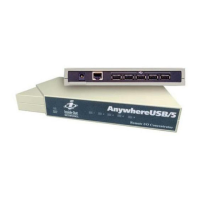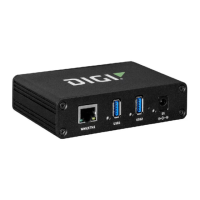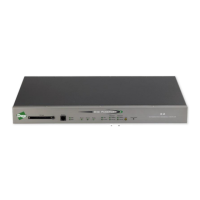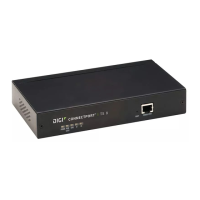Interfaces Wide Area Networks (WANs)
AnywhereUSB® Plus User Guide
106
Wide Area Networks (WANs) and Wireless Wide Area Networks
(WWANs)
A Wide Area Network (WAN) provides connectivity to the internet or a remote network. A WAN
configuration consists of the following:
n
A physical device, such as an Ethernet device or a cellular modem.
n
Several networking parameters for the WAN, such as firewall configuration and IPv4and IPv6
support.
n
Several parameters controlling failover.
Configure WAN/WWAN priority and default route metrics
The AnywhereUSB Plus device is preconfigured with one Wide Area Network (WAN), named ETH1, and
one Wireless Wide Area Network (WWAN), named Modem. You can also create additional WANs and
WWANs.
When a WAN is initialized, the AnywhereUSB Plus device automatically adds a default IP route for the
WAN. The priority of the WANis based on the metric of the default route, as configured in the WAN's
IPv4 and IPv6 metric settings.
Assigning priority to WANs
By default, the AnywhereUSB Plus device's WAN (ETH1) is configured with the lowest metric (1), and is
therefor the highest priority WAN. By default, the Wireless WAN (Modem) is configured with a metric of
3, which means it has a lower priority than ETH1. You can assign priority to WANs based on the
behavior you want to implement for primary and backup WANinterfaces. For example, if you want a
cellular connection to be your primary WAN,with an Ethernet interface as backup, configure the
metric of the WWANto be lower than the metric of the WAN.
Example: Configure cellular connection as the primary WAN, and the Ethernet
connection as backup
Required configuration items
n
Configured WANand WWAN interfaces. This example uses the preconfigured ETH1 and Modem
interfaces.
n
The metric for each WAN.

